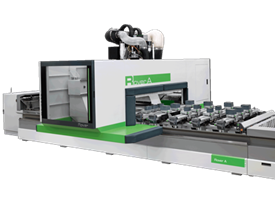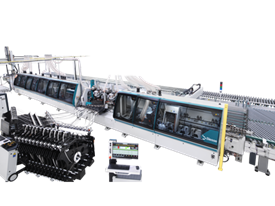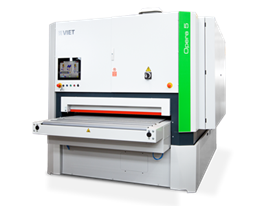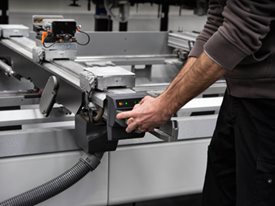In the manufacturing industry, scrap and rework are typically viewed as an expensive and unavoidable aspect of conducting business. However, manufacturers can reduce scrap and rework costs along with the effects of material costs and labour wastage on their bottom line by carefully structuring their operations.
Before laying out measures on how to reduce scrap in the manufacturing process, here are a few definitions:
"Scrap" refers to elements that were discarded during the production of a product, and can include everything from metal shavings to entire pieces.
Scrap differs from "waste" in that it may be recycled, making it valuable in terms of money.
When an examined component is discovered to be non-conforming, flawed, or failed and needs to be disassembled, fixed, replaced, or reassembled, this is referred to as "rework."
Tips on How to Reduce Scrap and How to Reduce Waste in Manufacturing
1) Cut down on human error
Automation should be used to minimise direct contact with parts, especially delicate parts that could be damaged if dropped. Parts may sustain damage while in transit or if they are handled manually.
A lot of blunders that result in scrap should be a warning flag that your staff needs further training. Effective teams are more likely to use software tools correctly and will not need to go through as many trial-and-error steps, which lowers the likelihood of human error.
2) Boost communication and change management
Poor or inadequate communication concerning manufacturing changes frequently results in scrap. For instance, if the engineering team decides to alter a component to enhance the final product, this decision must be swiftly and effectively communicated both within and throughout the supply chain.
Failure to do so could leave the business with a stockpile of the outdated component, which might be non-cancelable and non-returnable and would need to be turned into scrap.
3) Record everything
To prevent scrap and rework from being created by someone referring to an out-of-date document, standard operating procedures (SOPs), CAD drawings, and bills of materials (BOMs) should all be digitally documented and filed accurately. For information sharing and version control, documentation is a crucial component of change management.
Since CAD drawings alone cannot capture crucial information like design modifications made after manufacturing has started, manufacturers should construct and maintain a BOM for each product. A comprehensive set of paperwork, including BOM records, CAD sheets, information on revisions, datasheets, and work instructions, should be sent to third-party contract manufacturers.
4) Simplify and improve production methods
The design stage of the process is possibly crucial in terms of its ability to produce scrap. To reduce the number of prototypes needed, effective collaboration and communication between engineers, production team members, and material suppliers are essential.
Understanding where faults are introduced requires routine production line inspection. In addition to posing a safety risk, tools that are ill-fitting, broken, or poorly manufactured can be used as junk. If one Make sure you're using the appropriate equipment, methods, and supplies.
Utilise design strategies that reduce scrap. In the case of metal stamping, "nesting" refers to the practice of using more than one part type per die by putting smaller components into areas that would otherwise be designated for scrap. Offal dies, also referred to as recovery dies, are used in stamping shops to generate additional parts by sewing or glueing scraps together to form a continuous strip.
5) Create a Scrap plan
If you are wondering how to reduce waste in manufacturing, the important thing to understand is when scraping is necessary, it's critical to have a plan in place. Before looking at scrap recycling solutions outside your company, ask yourself if scrap can be repurposed or recycled within.
6) Considering Your Products' Containers
It frequently happens that after going through an ultrasonic cleaning or finishing procedure, newly created parts come out scratched up and need to be discarded. This frequently occurs because the parts-holding containers aren't constructed in a way that adequately safeguards the components they store. Instead, they were constructed on a budget to meet a fundamental operational need.
These simplistic container designs have a flaw in that they don't account for the peculiarities of production and the design of the components they store. As a result, there are more damaged pieces that need to be trashed. Therefore, these "money-saving" baskets cost more in wasted time and manufacturing junk than they do in initial costs.
To prevent scrap from component damage, it is essential to use a specialised wire basket or sheet metal form that is designed for the particular manufacturing application. For instance, covering an ultrasonic cleaning basket with a soft polymer to prevent metal-to-metal contact during the cavitation process can reduce the danger of dents and scratches that require scrapping or remanufacturing of parts.
These were some of the tips on how to reduce scrap in the manufacturing process & manage waste.



.png)





 Worldwide
Worldwide
 Italia
Italia
 United Kingdom
United Kingdom
 Россия
Россия
 France
France
 中国
中国
 Asia
Asia
 Deutschland
Deutschland
 España
España
 Schweiz
Schweiz
 North America
North America
 India
India
 Australia & New Zealand
Australia & New Zealand
 Türkiye Cumhuriyeti
Türkiye Cumhuriyeti
 Middle East
Middle East
 Brasil
Brasil